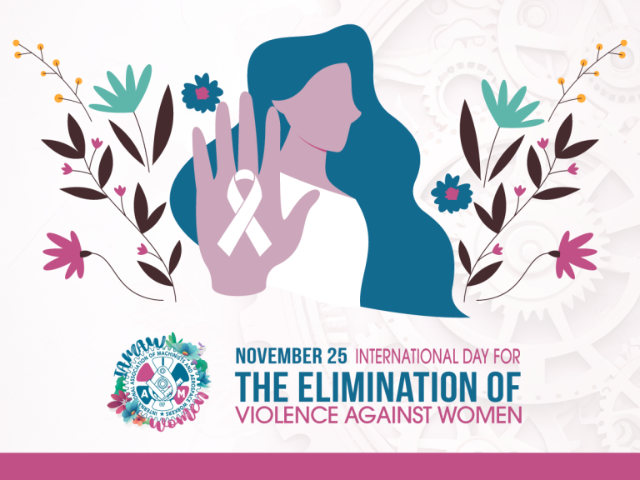International Day for the Elimination of Violence Against Women 2025:
Why This Day Still Matters — and What We Must Do Next
Date: Tuesday, November 25, 2025
Every year on November 25, the world marks the International Day for the Elimination of Violence Against Women, a global call to action to confront one of the most pervasive human rights violations of our time. The day is not just a symbolic reminder—it is a mirror held up to our societies, showing the ongoing struggles, hidden suffering, and systemic inequalities that millions of women and girls continue to face across the globe.
As we reach 2025, the significance of this day feels more urgent than ever. Despite decades of advocacy, legislative reforms, international conventions, and public awareness campaigns, violence against women persists at staggering levels. Each statistic, each headline, and each personal testimony points to a similar truth: we are far from achieving a world where women and girls can live free from fear, discrimination, and harm.
This article explores why the day remains crucial, the current state of gender-based violence, how global and local communities continue to respond, and what individuals, organizations, and governments can do to accelerate progress. More importantly, it reflects on the stories, resilience, and voices of women whose courage drives the movement forward.

1. Why November 25 Matters: A Brief History
The International Day for the Elimination of Violence Against Women traces its origins to Latin America. On November 25, 1960, the Mirabal sisters—three political activists in the Dominican Republic—were brutally murdered for their opposition to dictatorship. Decades later, their story inspired feminist movements across the region and eventually led the United Nations to designate November 25 as a global day of recognition in 1999.
Since then, the date has transformed into a focal point for advocacy groups, policymakers, humanitarian agencies, and citizens worldwide. It also launches the 16 Days of Activism Against Gender-Based Violence, running until December 10 (Human Rights Day), forming a powerful period of global mobilization.
These 16 days are not merely symbolic—they are a reminder that activism does not stop after one event. It is a continuous effort rooted in community engagement, education, institutional reform, and sustained public pressure.
2. The Global Situation in 2025: Progress Mixed With Persistent Challenges
2.1 The numbers remain alarming
International organizations such as UN Women and WHO consistently report that:
1 in 3 women worldwide experience physical or sexual violence in their lifetime.
More than 245 million women suffered intimate partner violence in the past year alone.
Digital violence—cyberbullying, stalking, non-consensual image sharing—continues to rise.
Conflict zones drastically increase risk, with displaced and refugee women facing heightened vulnerability.
These figures illustrate a grim reality: violence against women is not an isolated phenomenon but a systemic issue, deeply embedded in social structures and cultural norms.
2.2 Progress exists—but unevenly
Some countries have expanded legal protections; more women are reporting abuse; and public awareness is stronger. The #MeToo movement, ongoing advocacy, and widespread digital activism have shifted conversations around consent, accountability, and safety.
However, 2025 exposes persistent gaps:
Many survivors still cannot access legal justice.
Shelters and support services remain underfunded.
Social stigma continues to silence victims.
Economic inequality makes many women unable to leave violent situations.
The fight is far from over.
3. The Many Forms of Violence Women Face
Violence against women is not one-dimensional. It manifests in multiple forms—often interlinked, often hidden from view.
3.1 Domestic and intimate partner violence
One of the most common forms, yet also one of the least reported. Many women stay silent due to fear, financial dependency, threats to their children, or social pressure.
3.2 Sexual violence and harassment
Ranging from assault to workplace harassment, sexual violence remains widespread in both public and private spheres.
3.3 Economic and financial abuse
Control over money, restriction of employment, and manipulation of financial resources are increasingly recognized as powerful tools of abuse.
3.4 Digital violence
In 2025, online spaces have become battlegrounds for gendered harassment. Women journalists, activists, and public figures often face severe digital threats.
3.5 Harmful cultural practices
Forced marriage, honor-based violence, and female genital mutilation continue in various regions, often justified under tradition despite their human rights violations.
3.6 Violence in conflict and crisis
Women and girls living in war zones, refugee camps, and disaster-stricken areas face exponentially higher risks of exploitation, trafficking, and abuse.
Each form of violence may look different, but they share the same underlying cause: gender inequality rooted in power imbalances.
4. Understanding the Deeper Causes
Violence against women is not random. It stems from:
4.1 Gender stereotypes and patriarchal structures
Cultures that normalize male dominance or portray women as inferior reinforce unequal power dynamics.
4.2 Lack of economic independence
Without access to income or property, many women lack the means to leave harmful environments.
4.3 Gaps in education
Limited awareness about gender equality and human rights sustains discriminatory attitudes.
4.4 Weak legal systems
Inadequate laws or inconsistent enforcement allow perpetrators to act with impunity.
4.5 Normalization of violence
In many societies, harmful behaviors are minimized, justified, or dismissed as “family matters.”
Understanding these root causes is essential for effective long-term solutions.
5. Voices of Survivors: Stories That Fuel Change
Behind every statistic is a real woman with a real story. Survivors continue to reshape the global conversation through courage and advocacy.
A mother who found strength
A domestic violence survivor who rebuilt her life with the support of a shelter and later became an advocate herself.
A student who spoke up
A university student who exposed harassment at her institution, leading to policy reforms and accountability measures.
An activist fighting digital abuse
A journalist who confronted online threats, refused to be silenced, and now teaches digital self-defense.
These stories remind us that change is possible—and that every act of survival is an act of resistance.
6. What the World Is Doing: Global and Local Efforts
6.1 International institutions
Organizations like UN Women, WHO, UNICEF, and human rights groups continue to drive global initiatives focused on prevention, legal reform, and survivor support.
6.2 Governments
Many governments are implementing:
Stricter domestic violence laws
24/7 hotlines
Expanded police training
Funding for safe houses
Public education campaigns
However, implementation varies significantly by region.
6.3 Community groups and NGOs
Grassroots organizations often make the biggest impact, offering hands-on services such as counseling, legal aid, emergency shelters, and empowerment programs.
6.4 The role of men and boys
Increasingly, men and boys are invited into the conversation—not as bystanders, but as partners in ending violence. Promoting healthy masculinity, empathy, and nonviolence is crucial for long-term change.
7. What You Can Do: Practical Ways to Contribute
You do not need to be an activist or policymaker to make a difference. Every person has a role.
7.1 Educate yourself and others
Learn about the dynamics of gender-based violence and share reliable information within your community.
7.2 Support local women’s organizations
Funding, volunteering, and advocacy help sustain essential services.
7.3 Speak up against harmful behavior
Silence perpetuates abuse. Challenge sexist jokes, stereotypes, and attitudes whenever you encounter them.
7.4 Support survivors with empathy
Believe women. Listen without judgment. Provide resources, not pressure.
7.5 Promote digital safety
Encourage safe online practices and report abuse on digital platforms.
7.6 Advocate for stronger laws and policies
Use your voice to push for legal reforms, better enforcement, and more funding for support services.
7.7 Teach the next generation
Educate children about equality, respect, consent, and emotional intelligence.
Change begins with everyday actions.
8. Why This Day Still Matters in 2025
Some may ask: after decades of marking November 25, why do we still need this day? The answer is simple:
Because violence against women has not stopped.
Because millions still suffer in silence.
Because equality remains a goal—not yet a reality.
This day is not just about remembering the problem. It is about renewing our commitment to a world where women can live free of fear—where dignity, freedom, and safety are fundamental rights enjoyed by all.
9. Toward a Future of Safety, Equality, and Empowerment
The journey to eliminating violence against women is long, but progress is possible. We see hope in the activists leading community workshops, the governments strengthening protective laws, the teachers educating boys about respect, and the survivors whose courage inspires global movements.
On this International Day for the Elimination of Violence Against Women—November 25, 2025—let us not only raise awareness but transform awareness into action. Let us build a future where every woman and girl can walk freely, speak boldly, live safely, and dream without limits.
Ending violence against women is not the responsibility of one gender, one country, or one organization. It is a collective mission, one that requires empathy, courage, solidarity, and the belief that a better world is possible.
Let today be both a reminder and a catalyst.
Let it strengthen our resolve.
Let it guide our actions, not only for these 16 days—but every day of the year.




